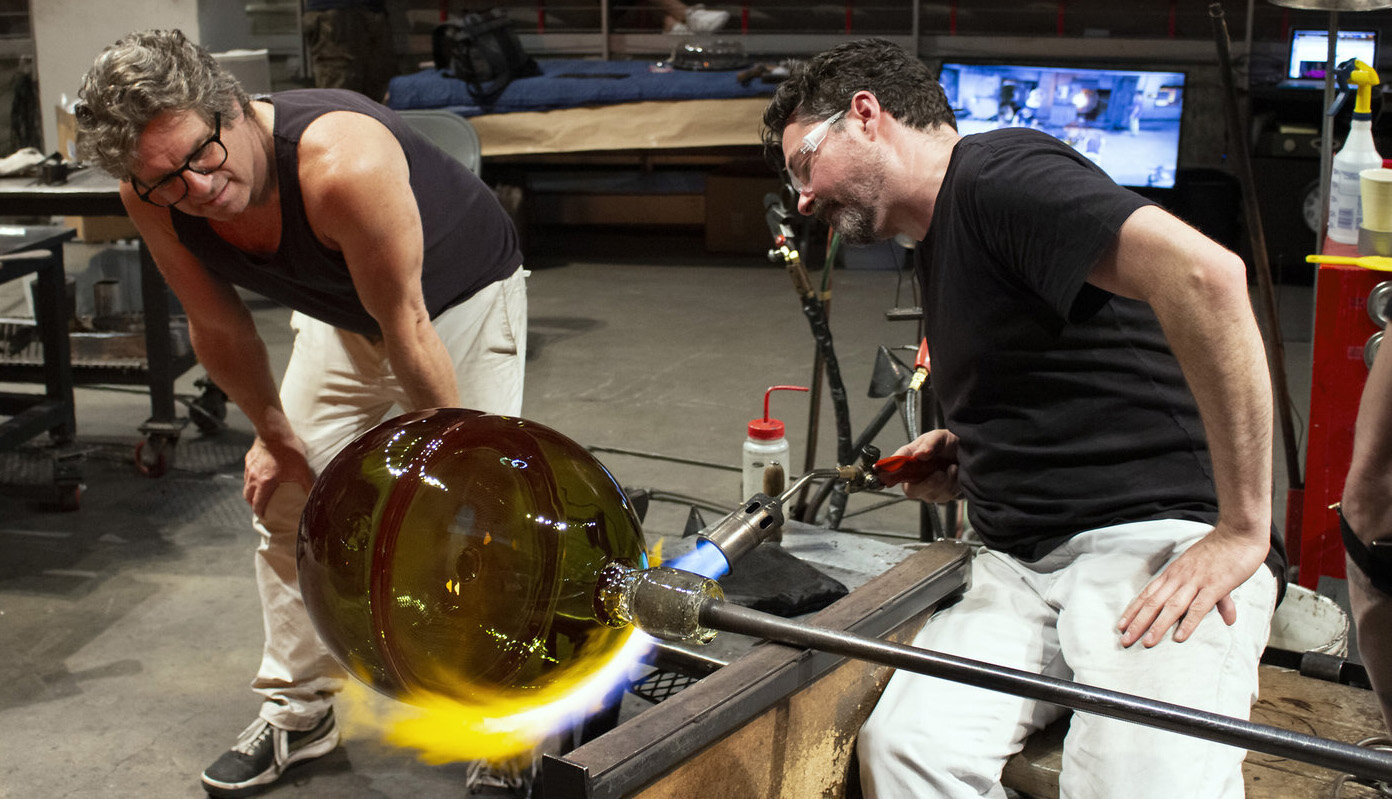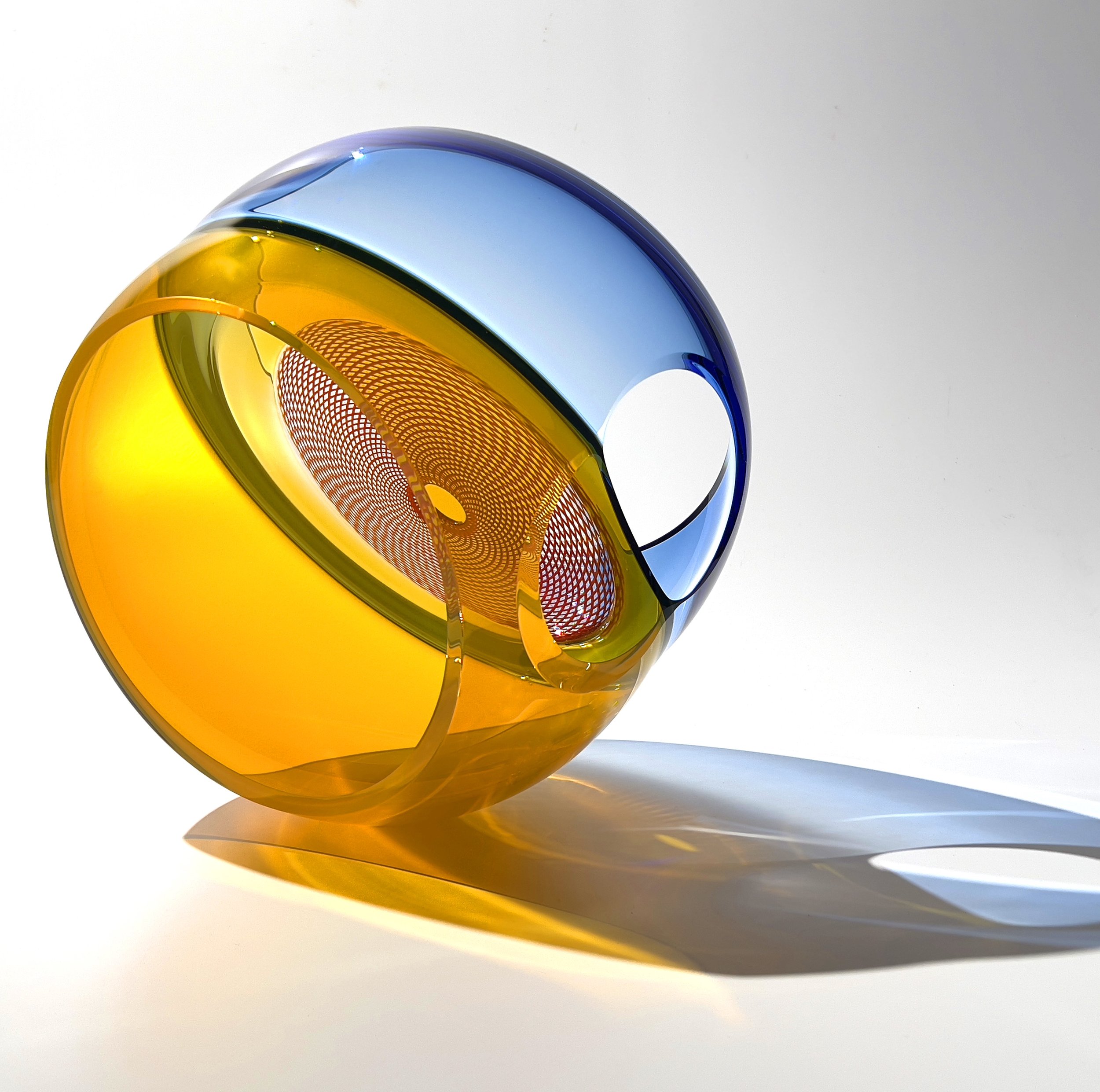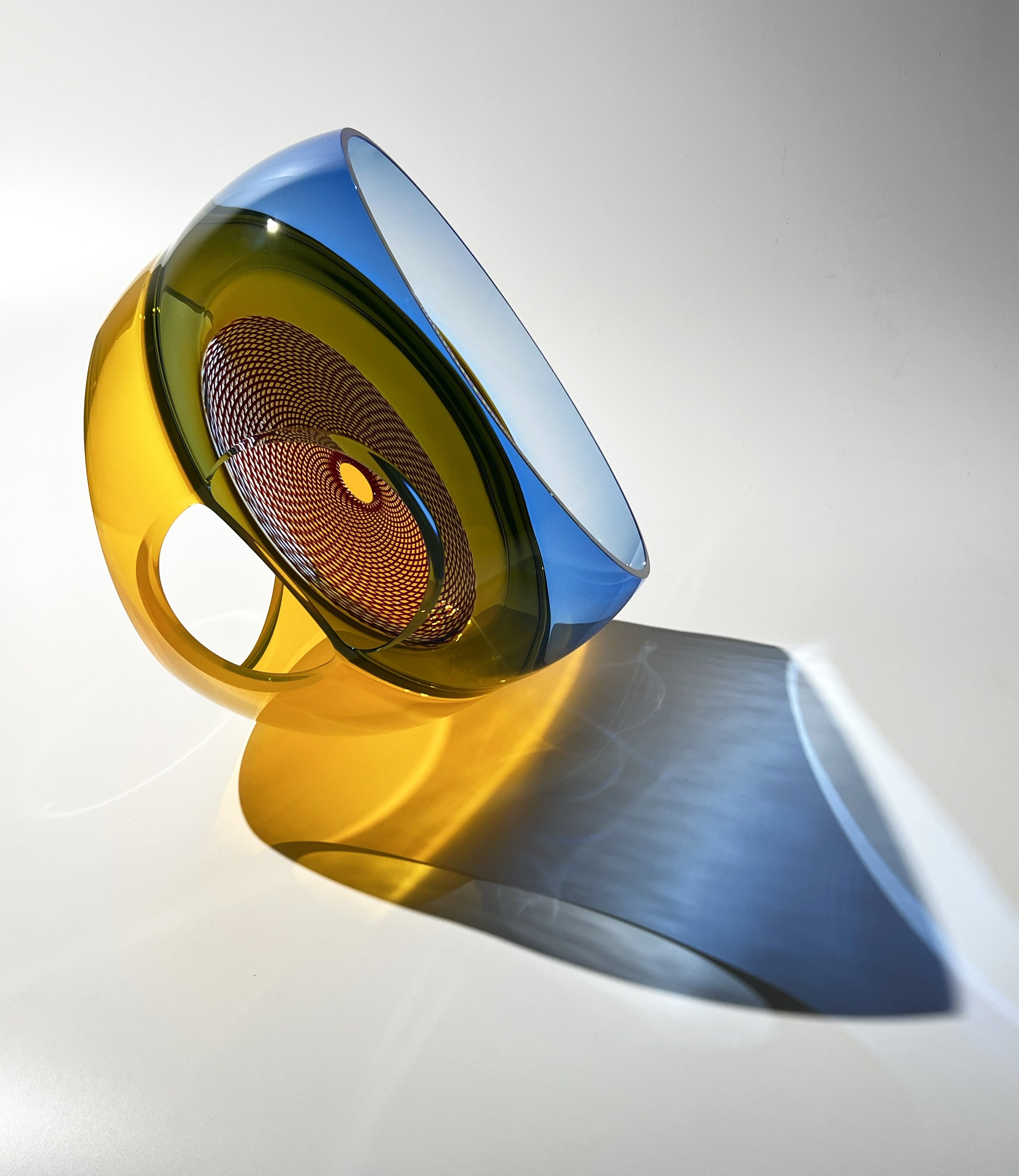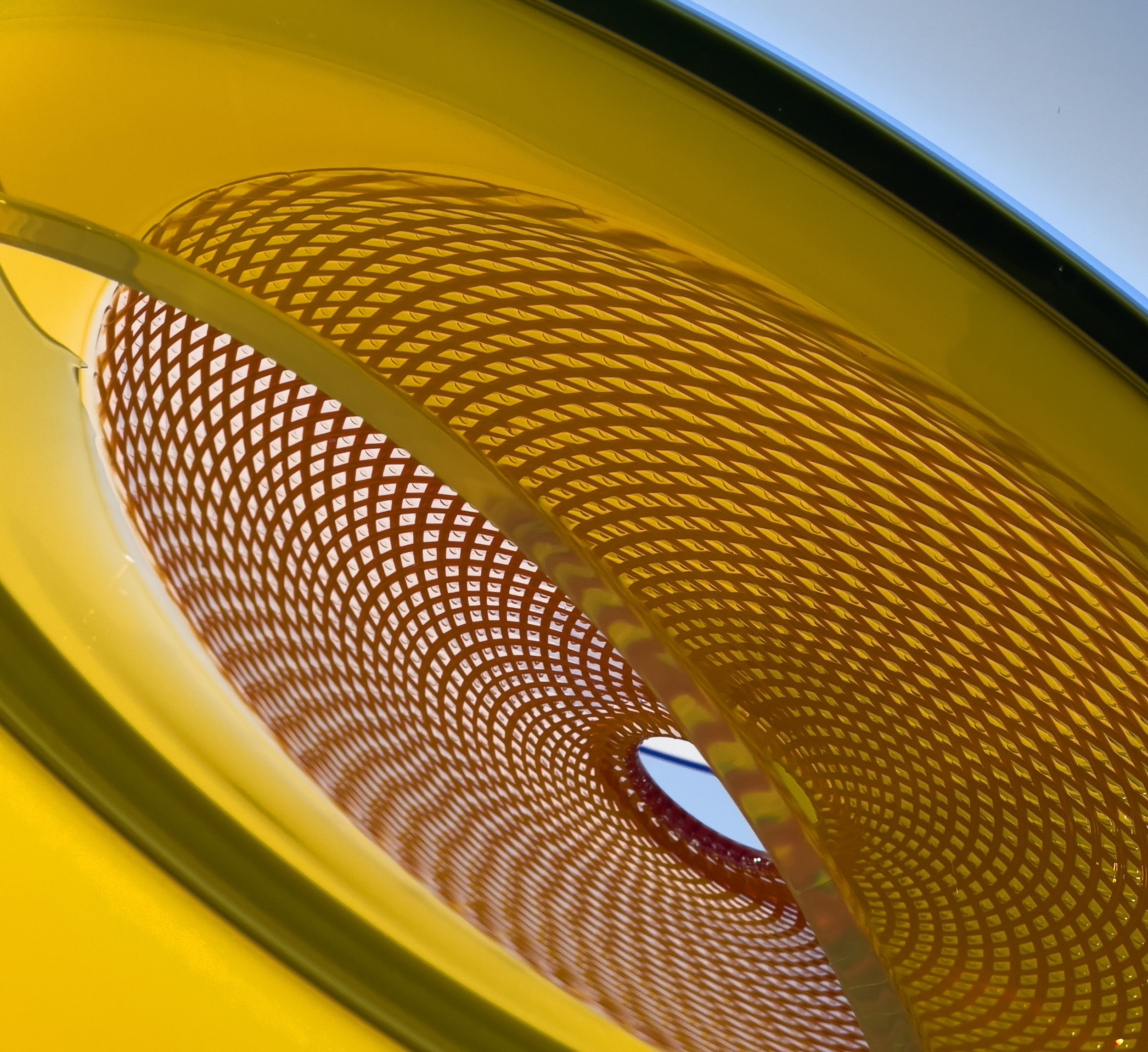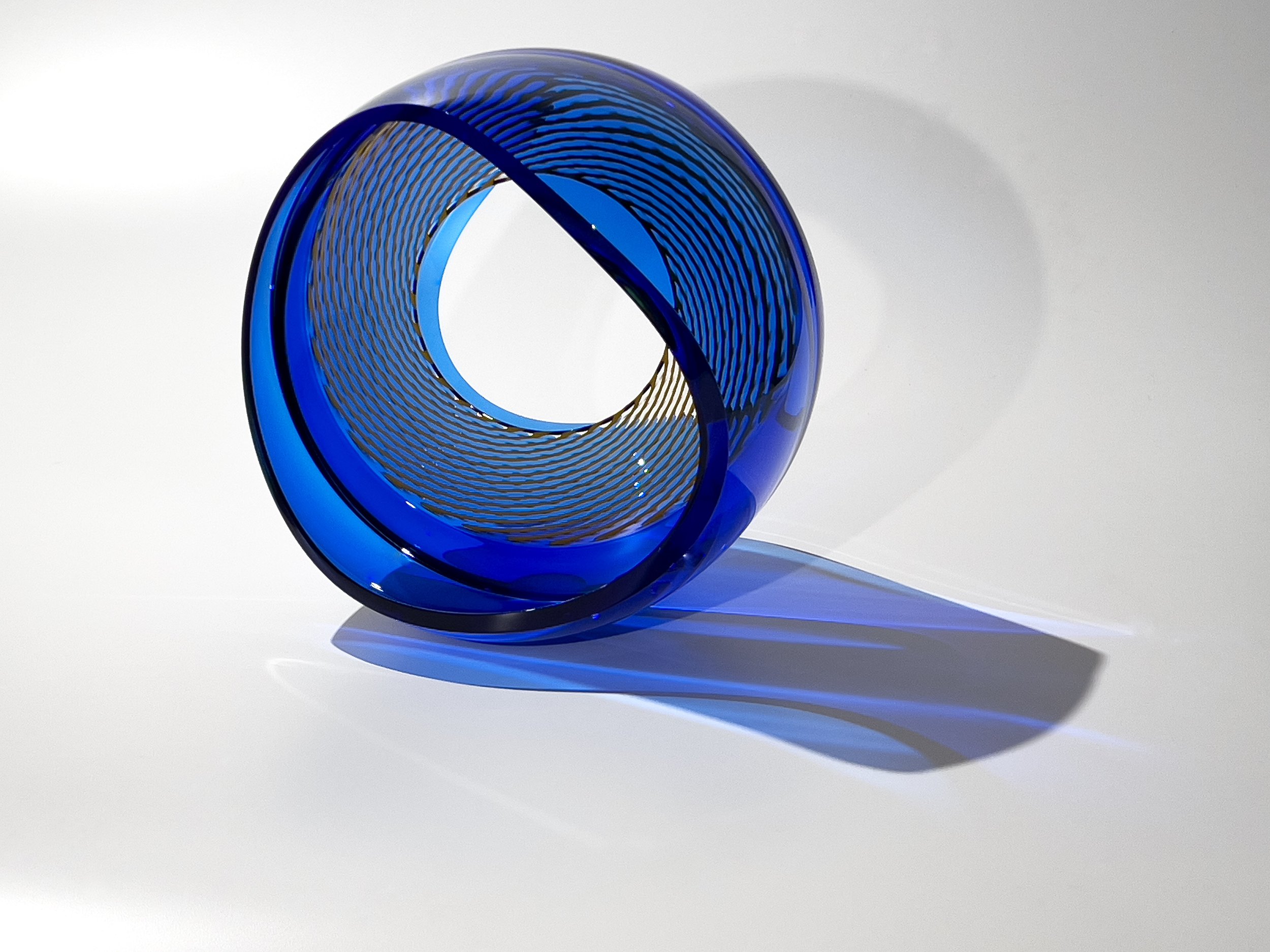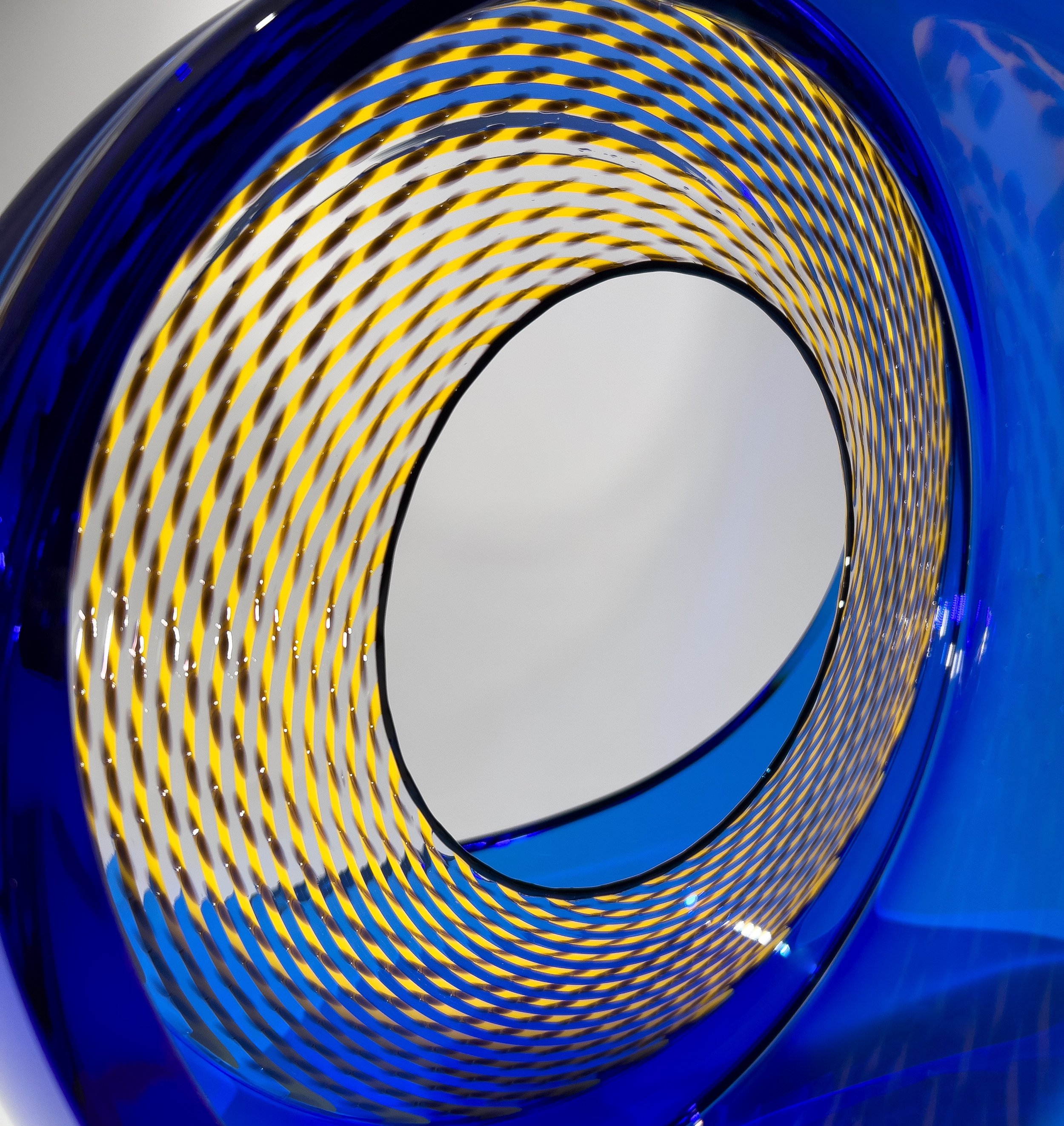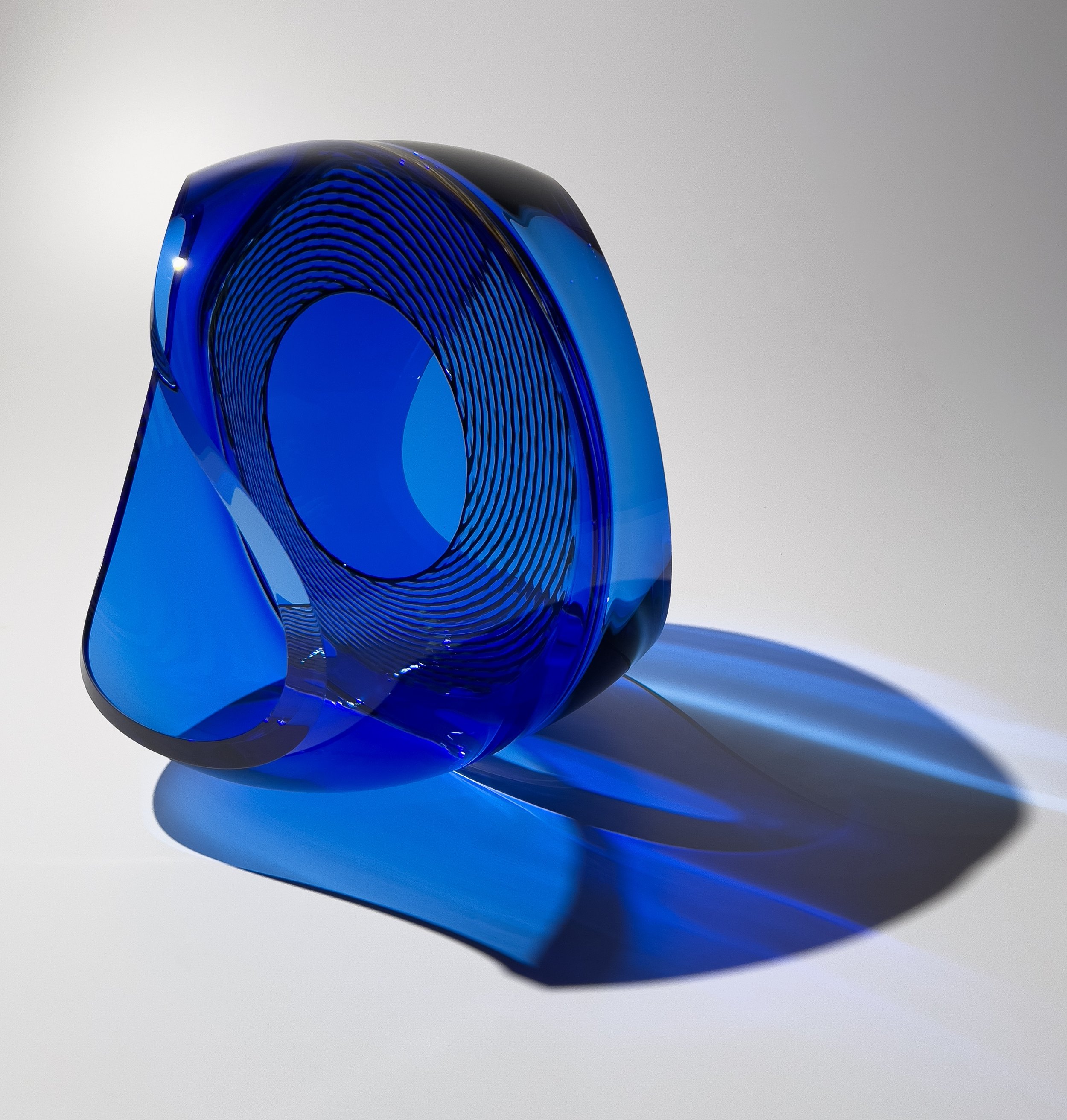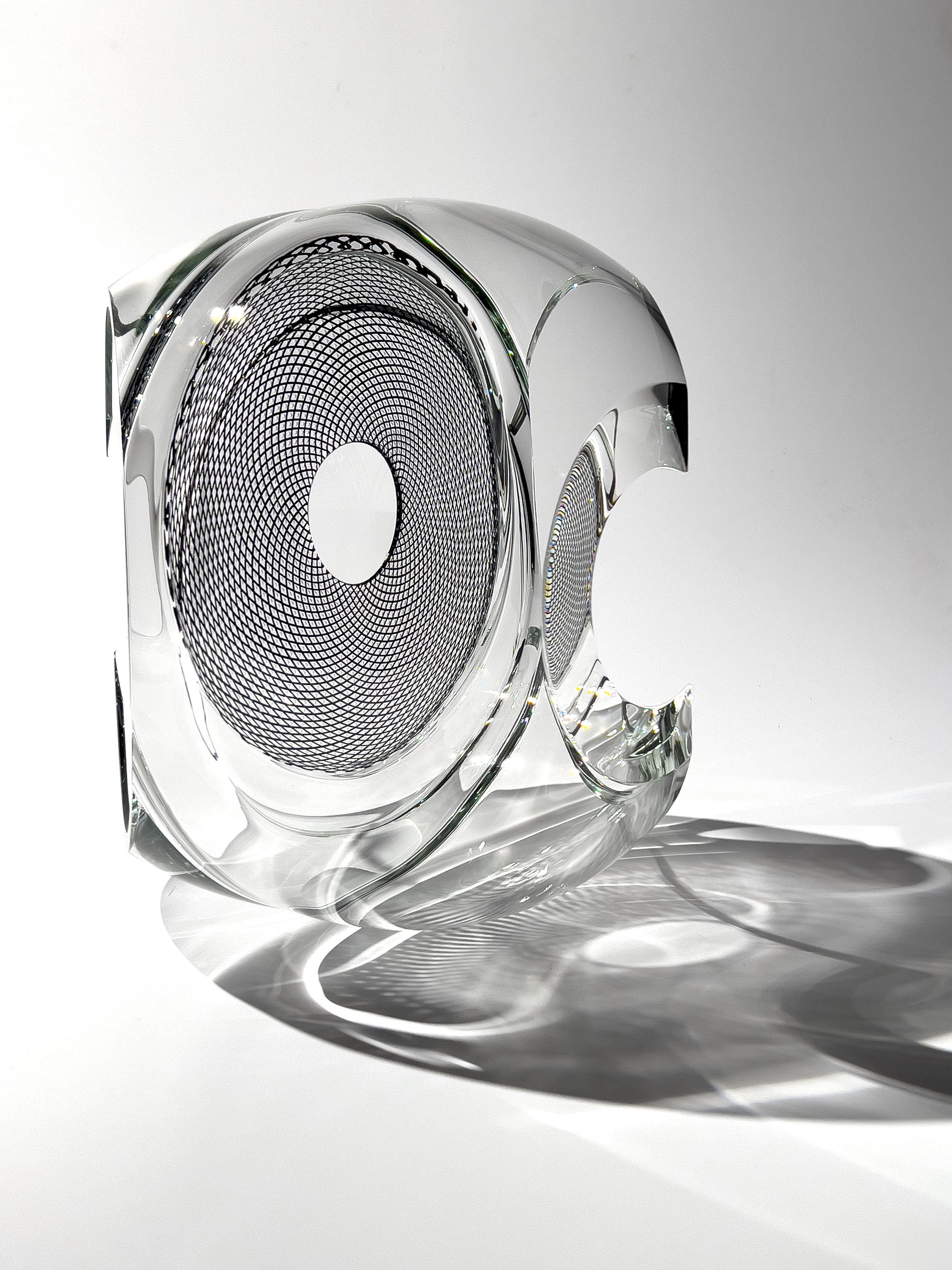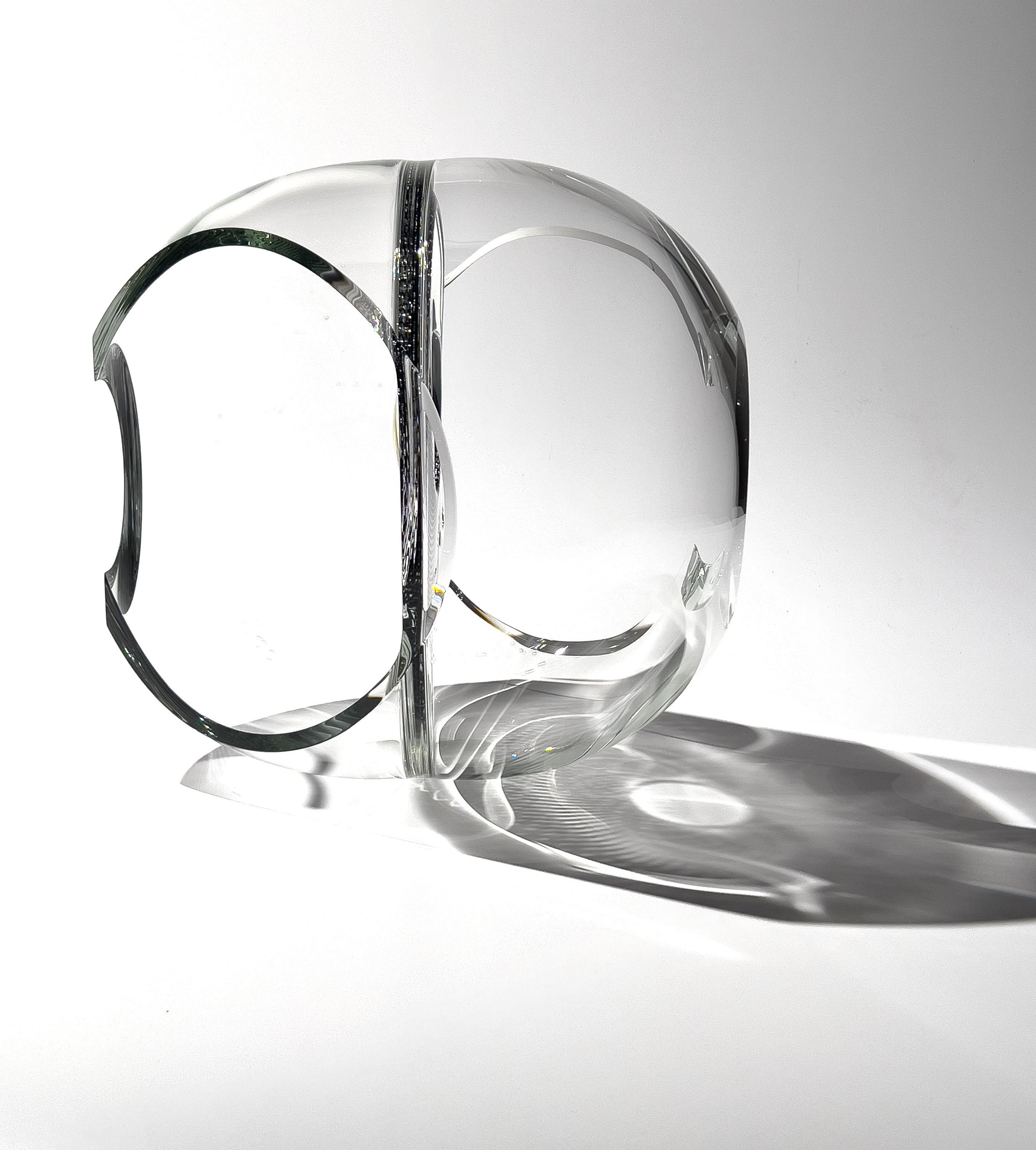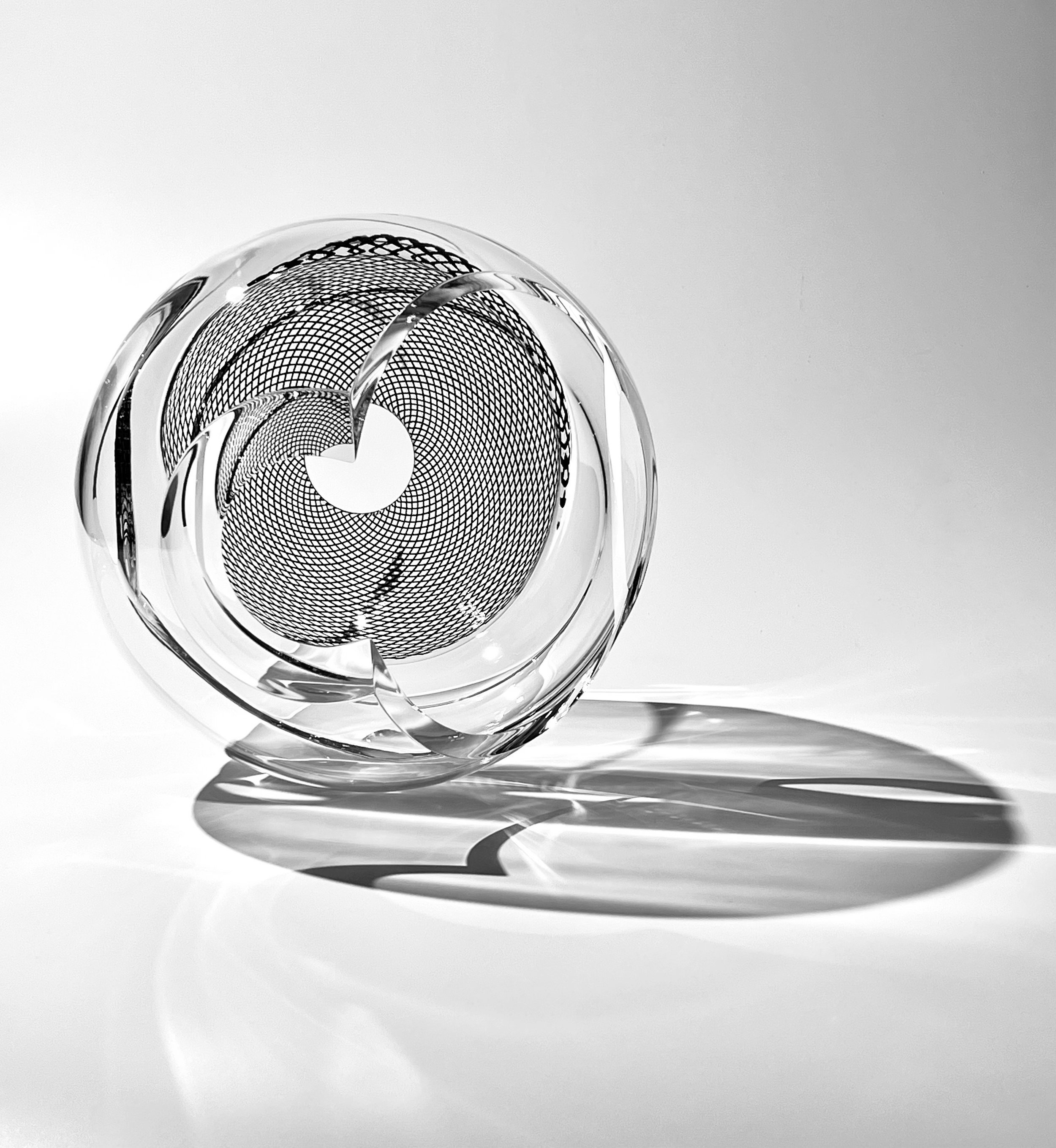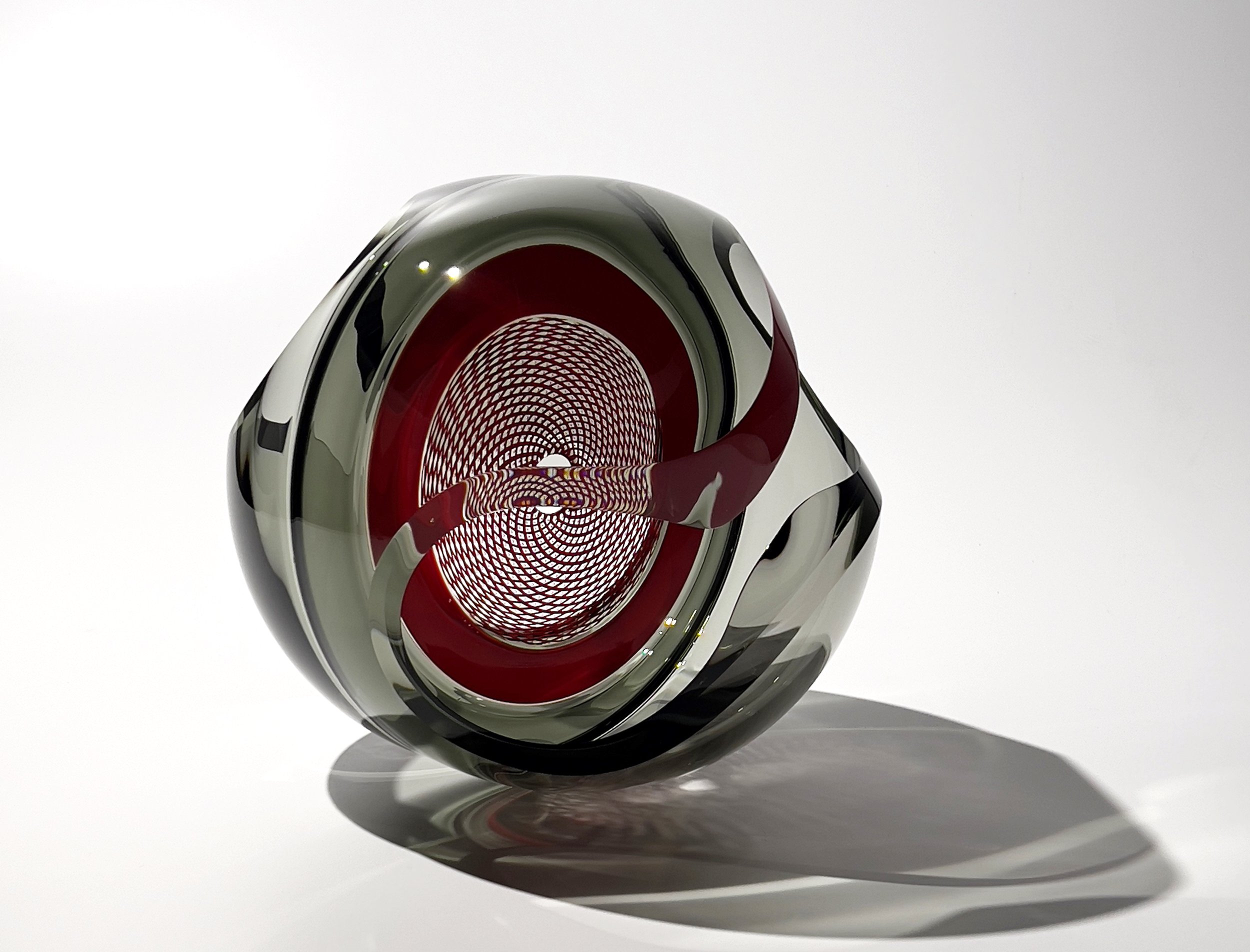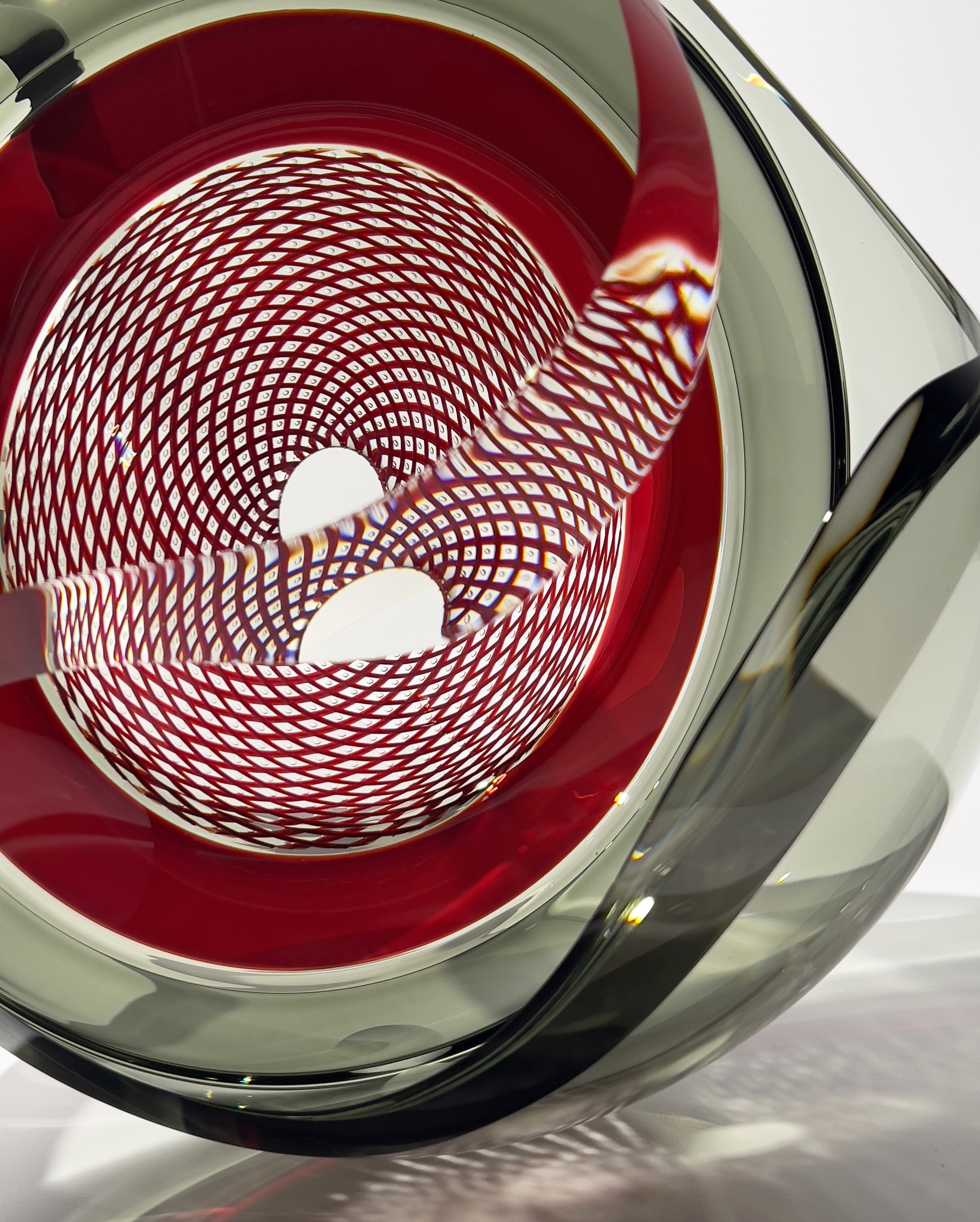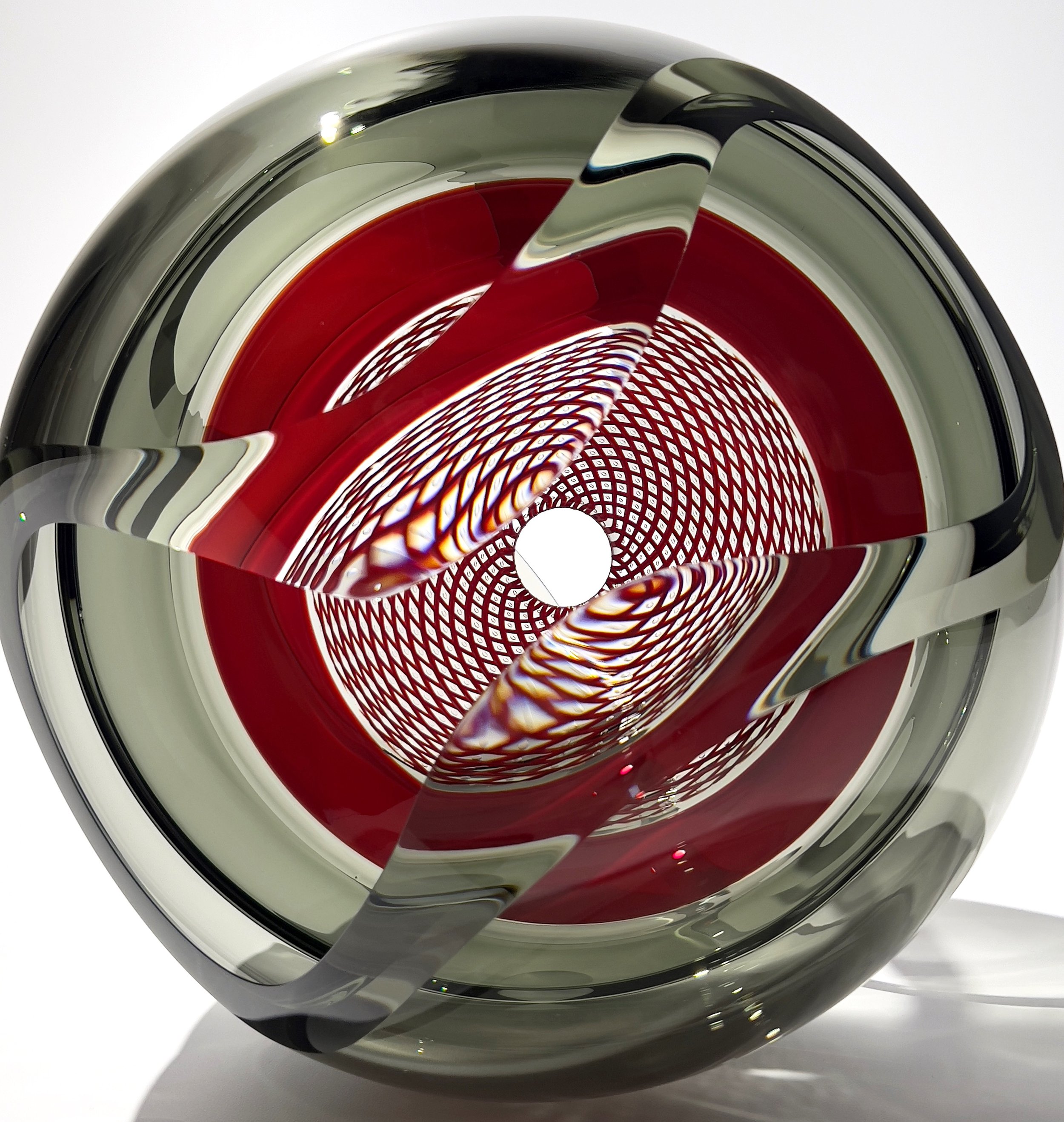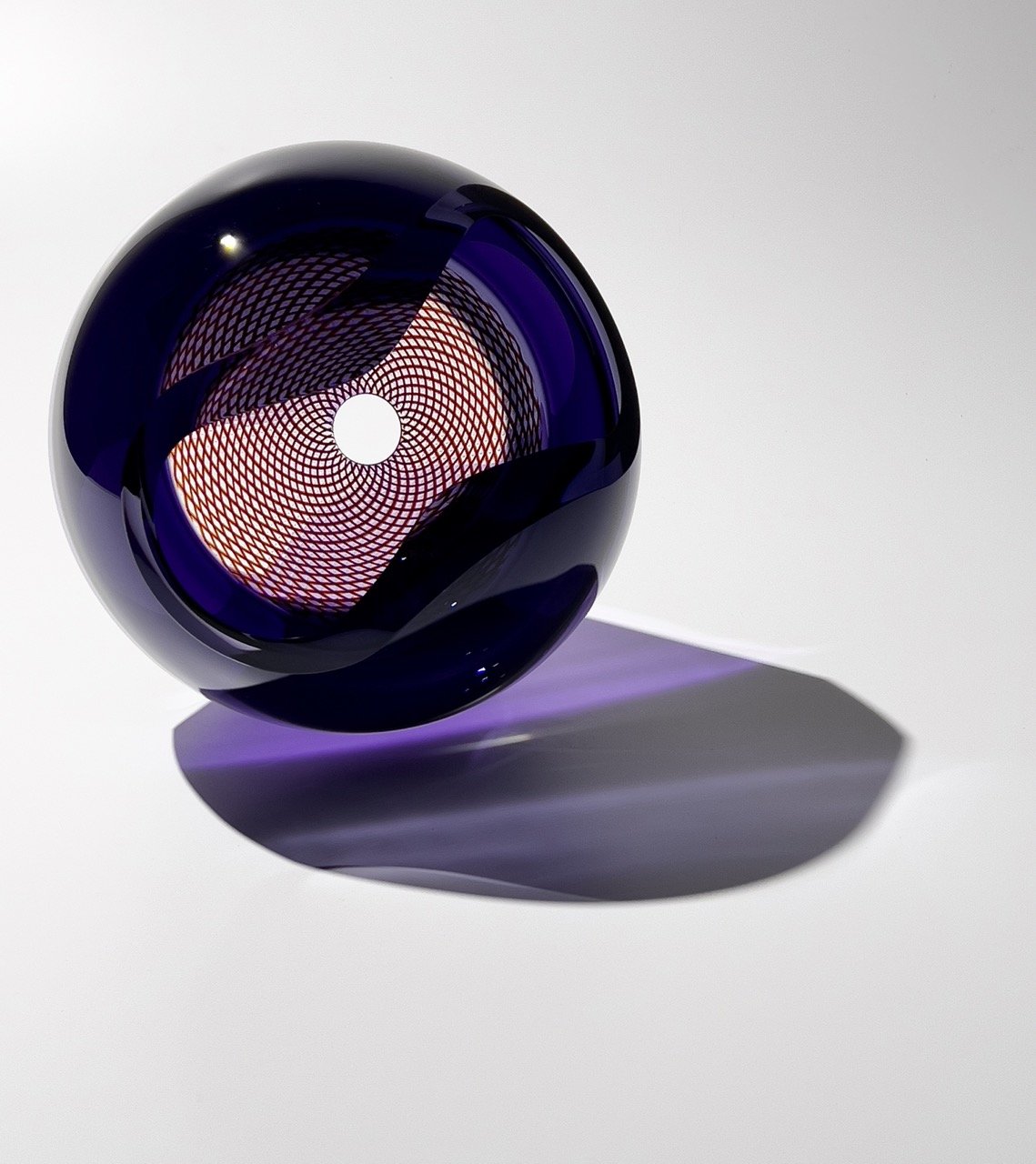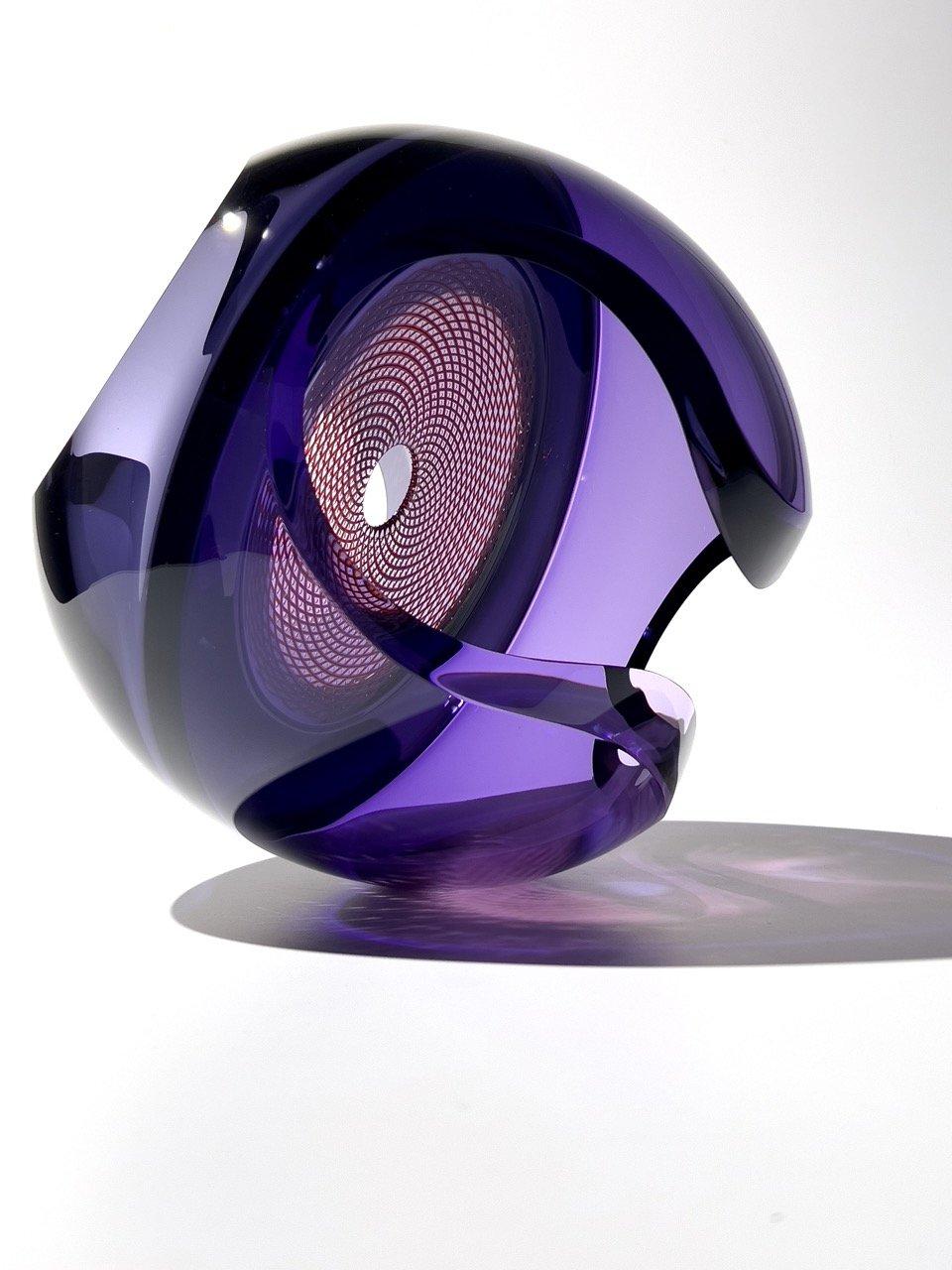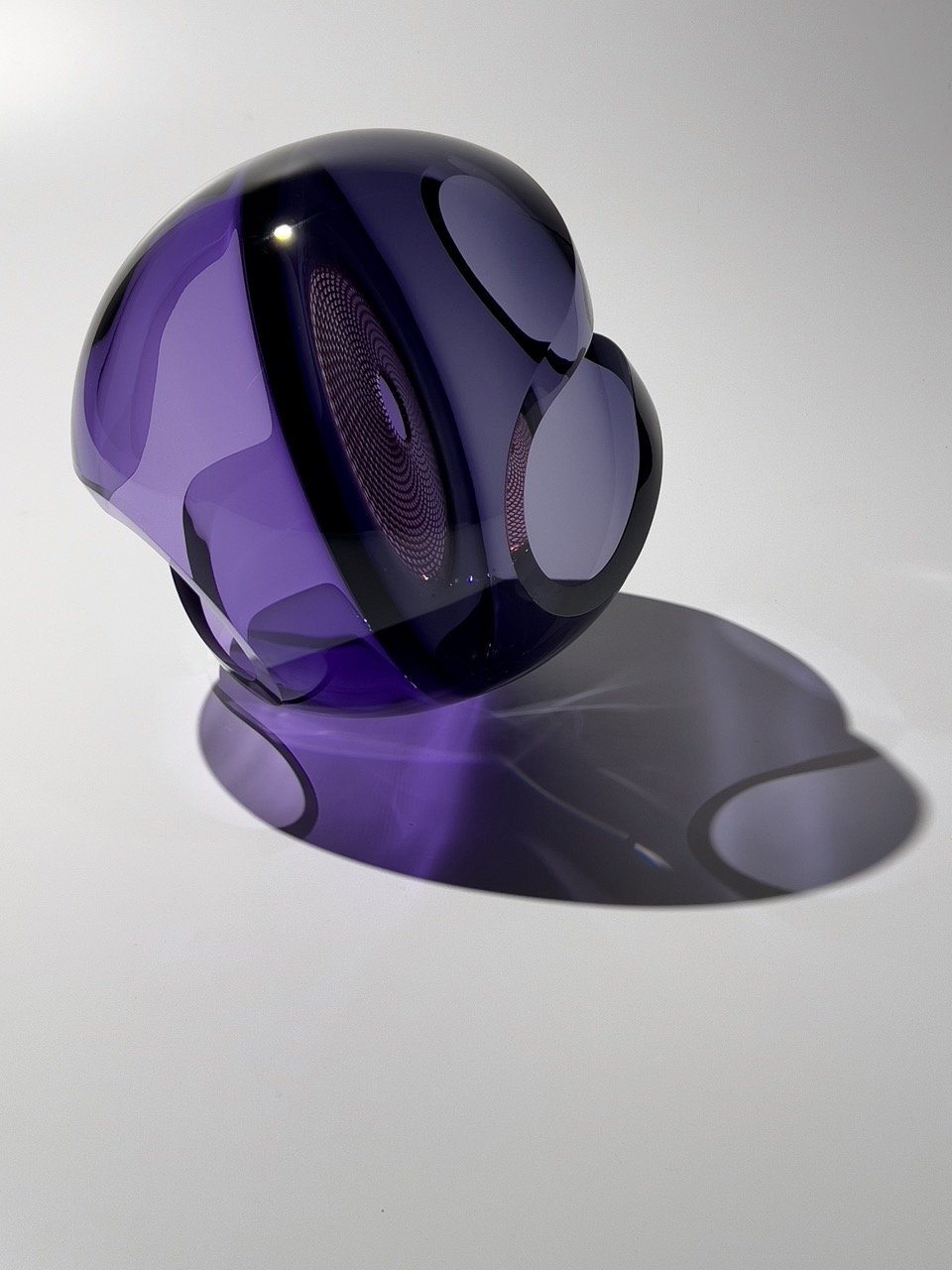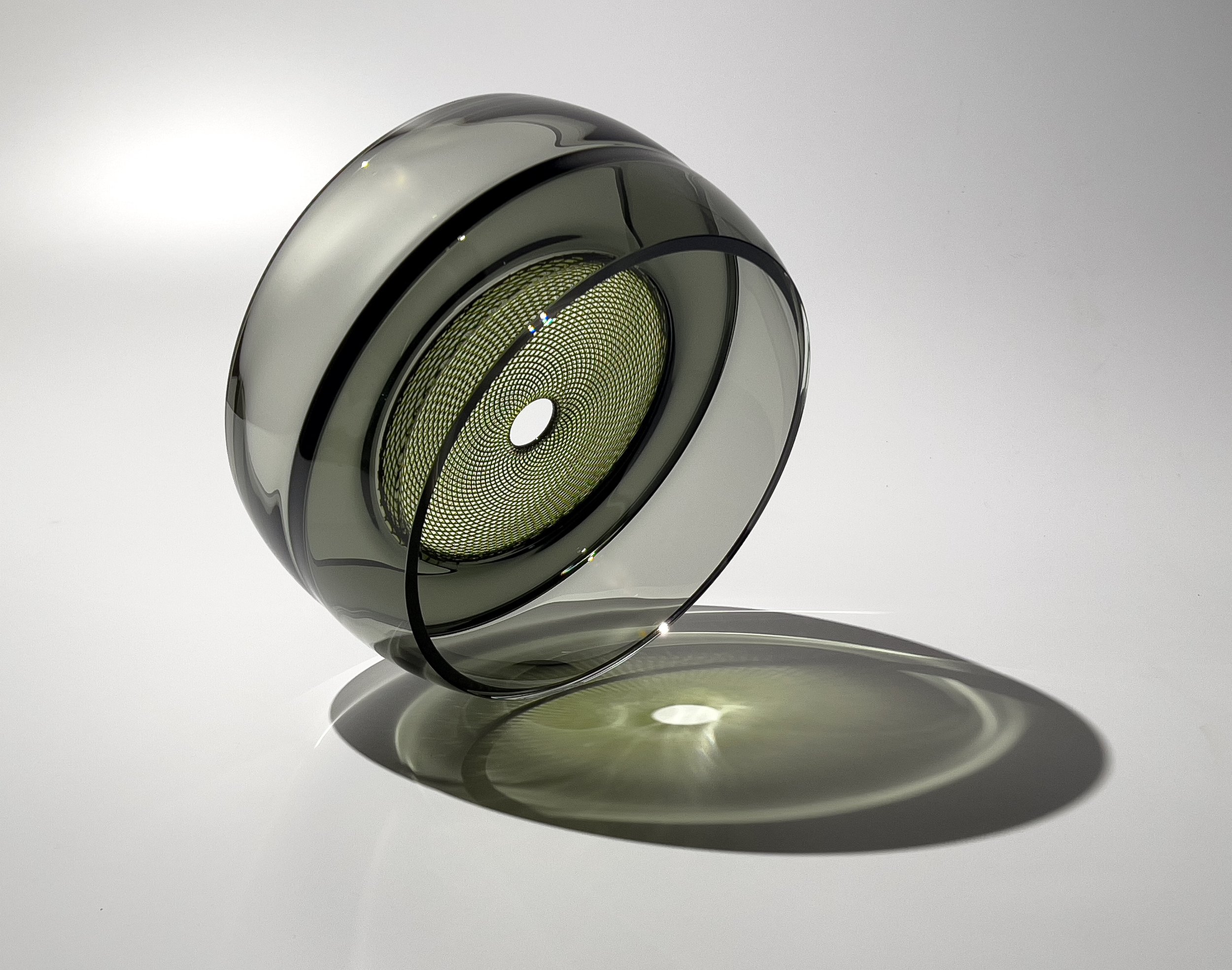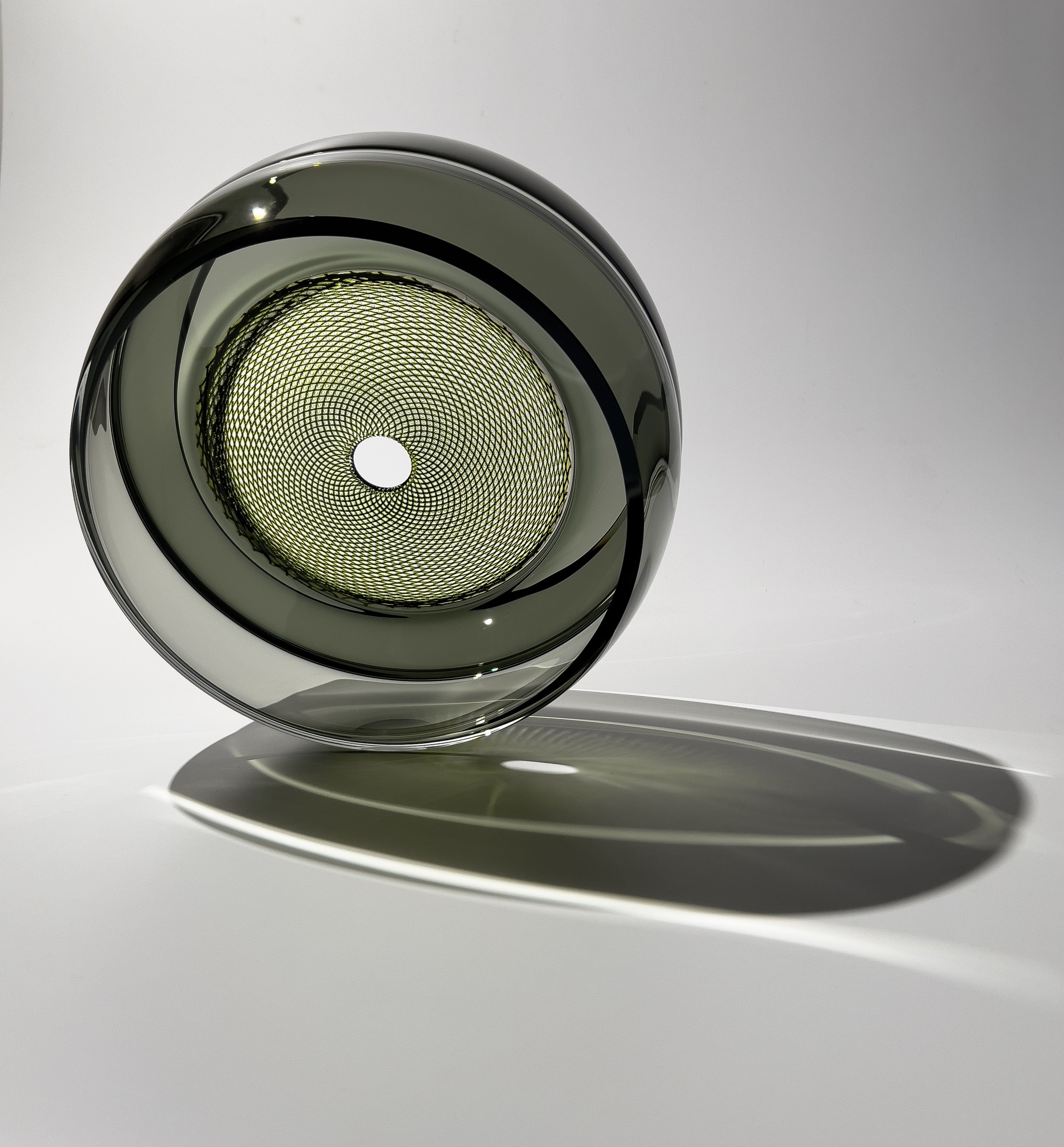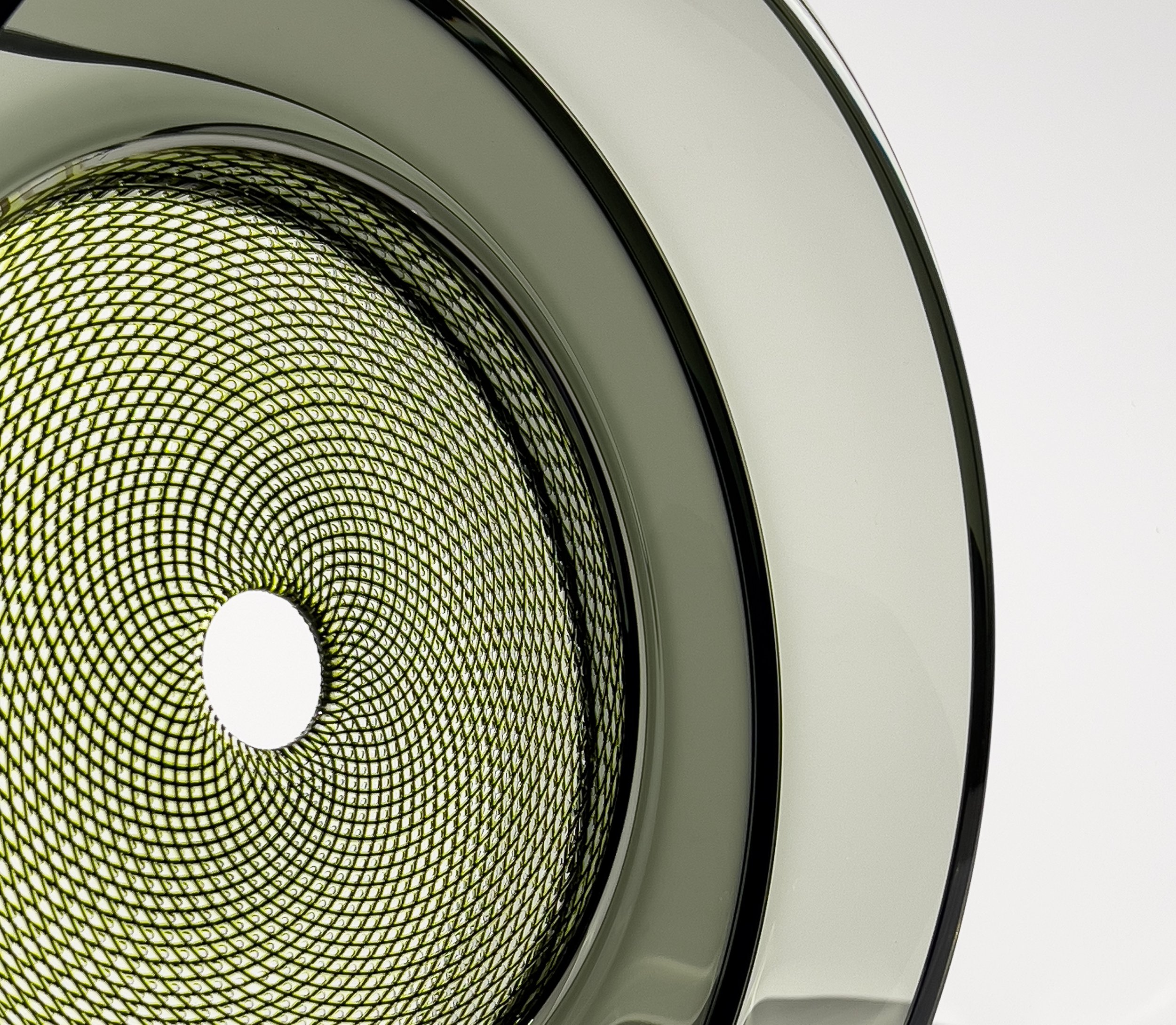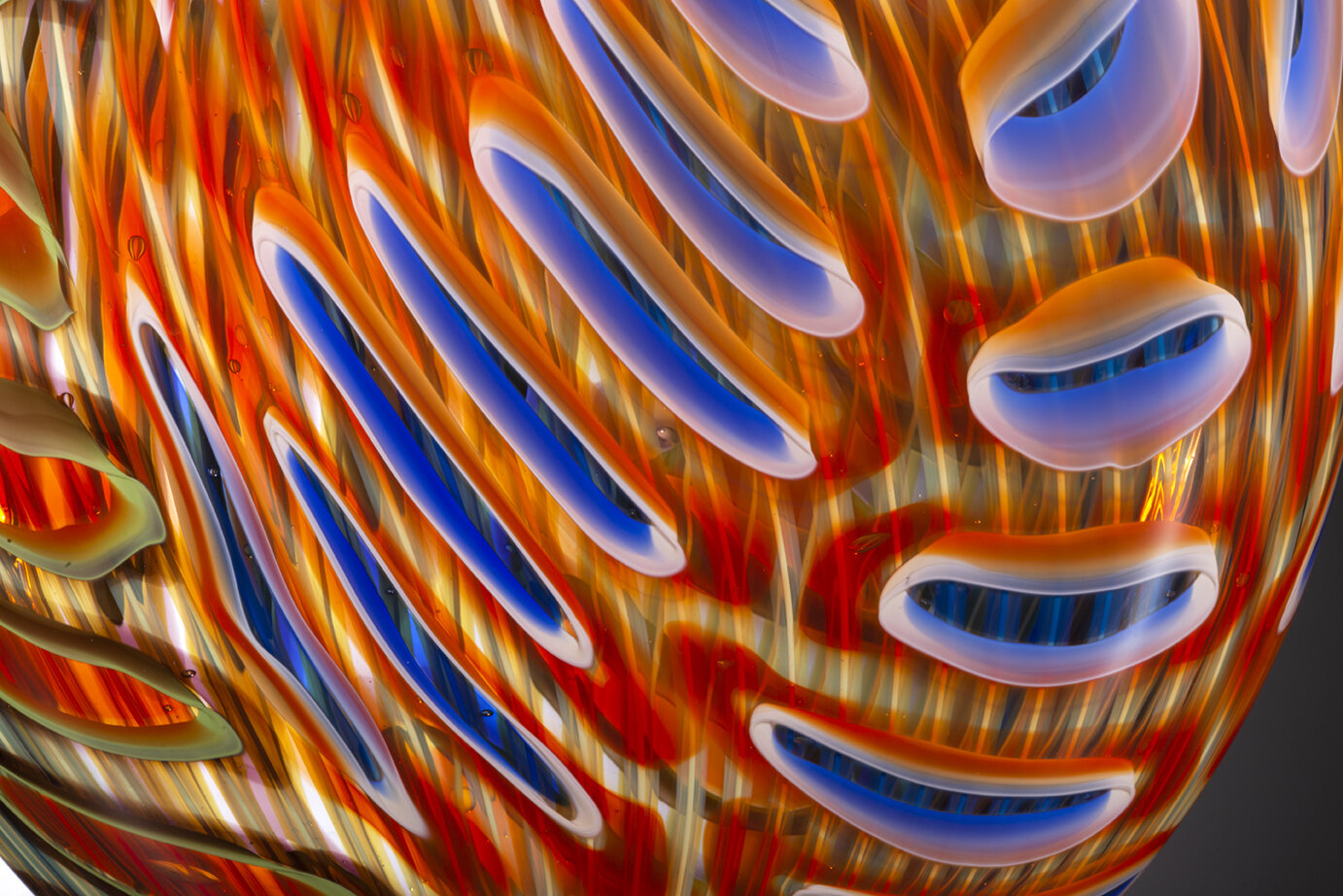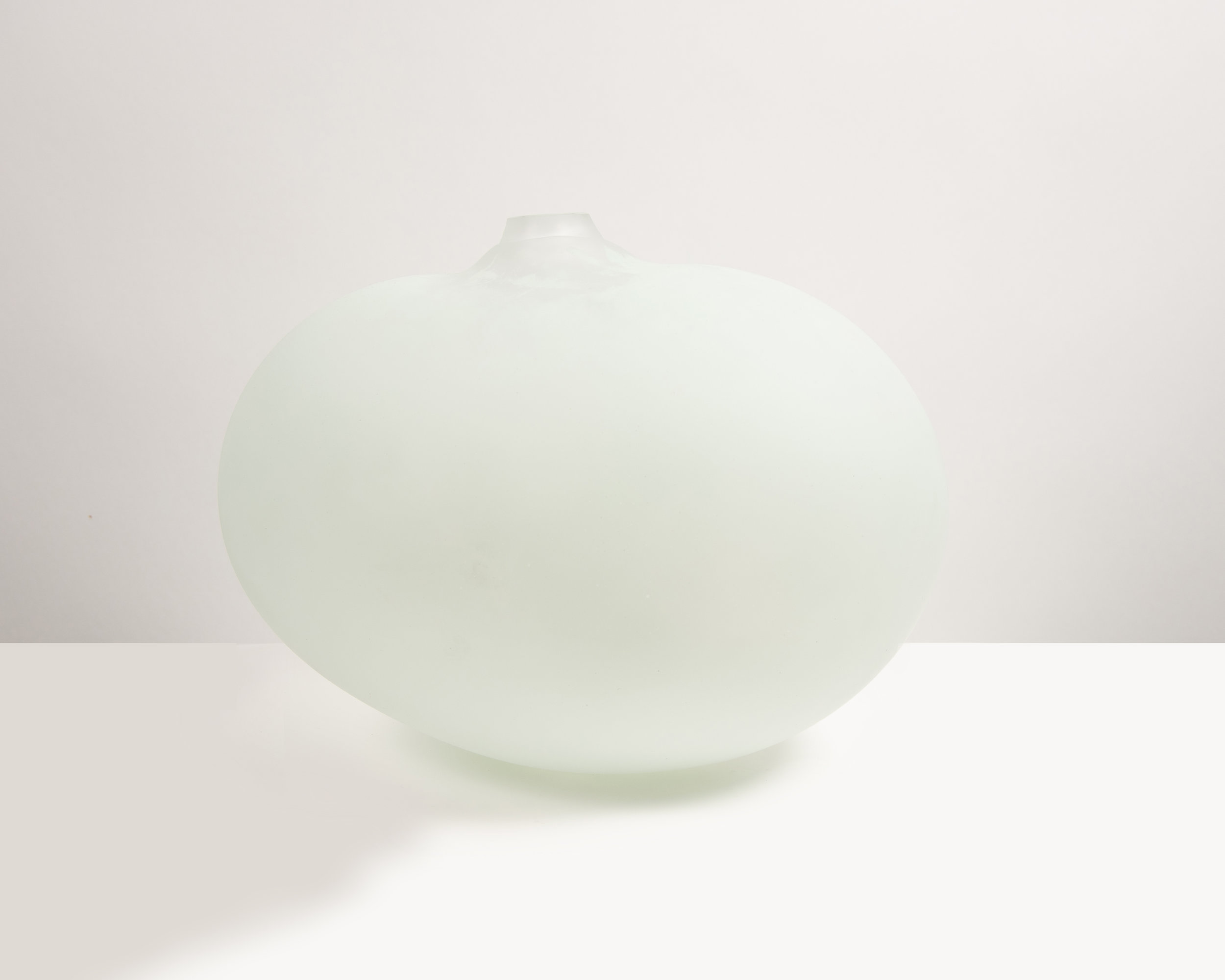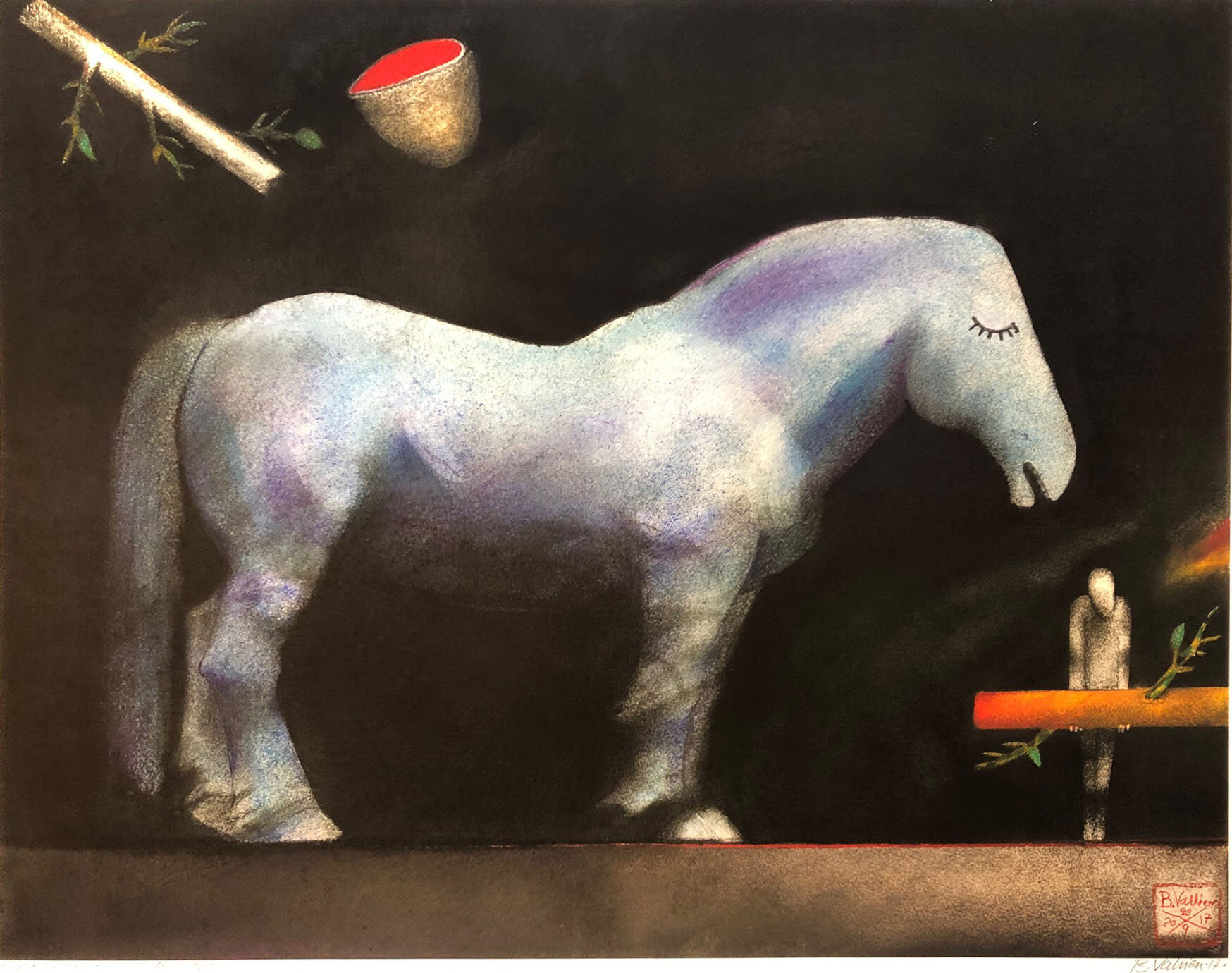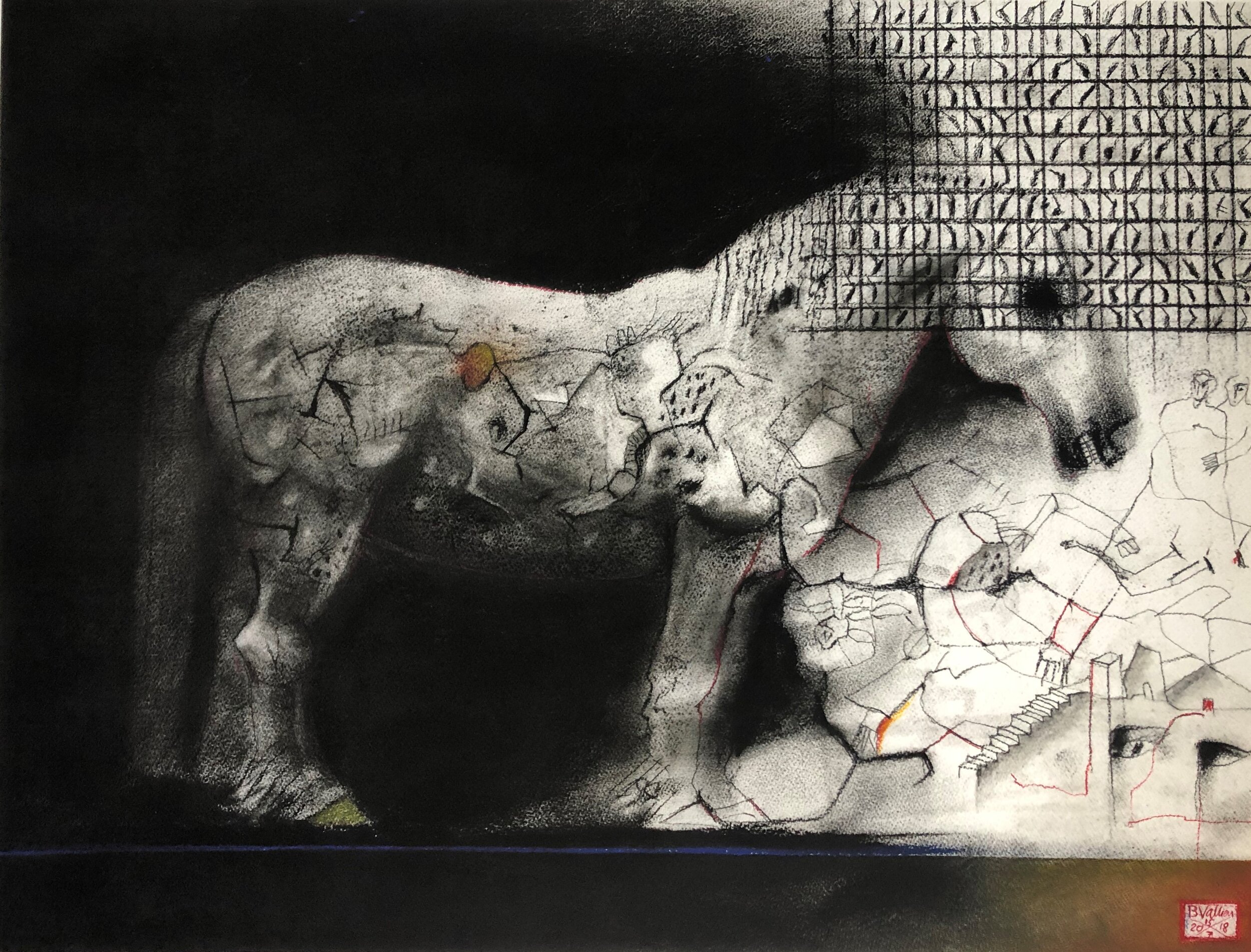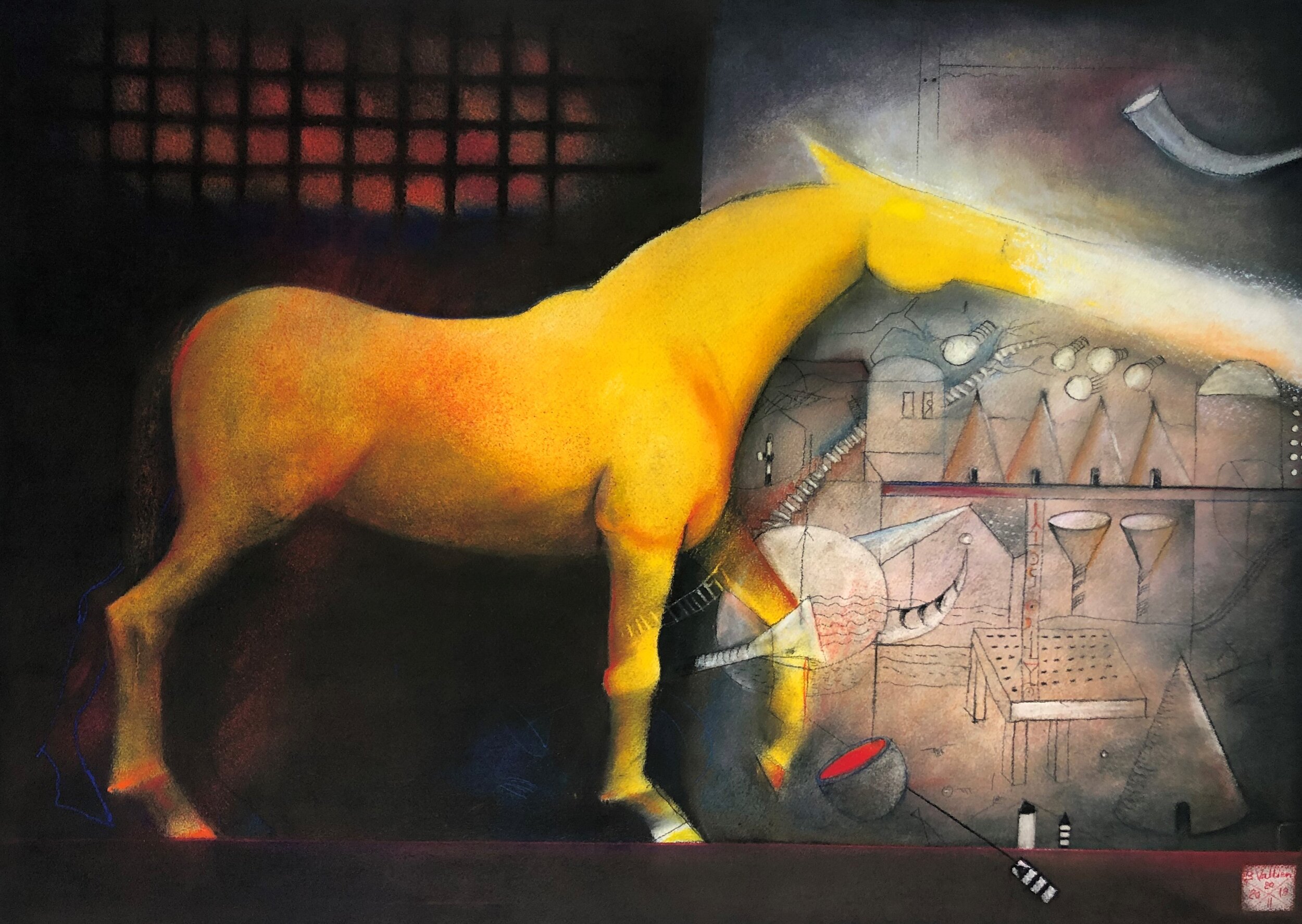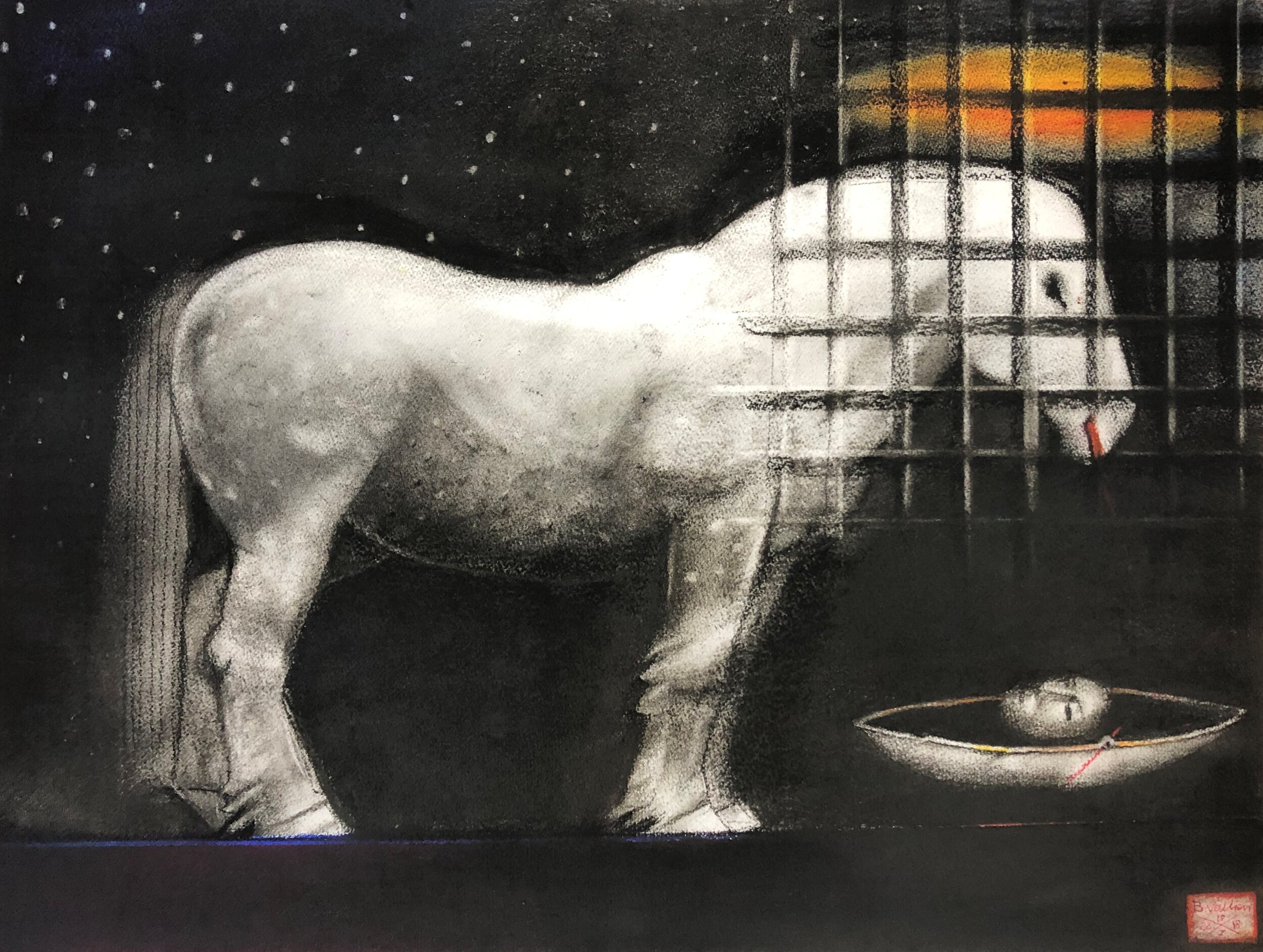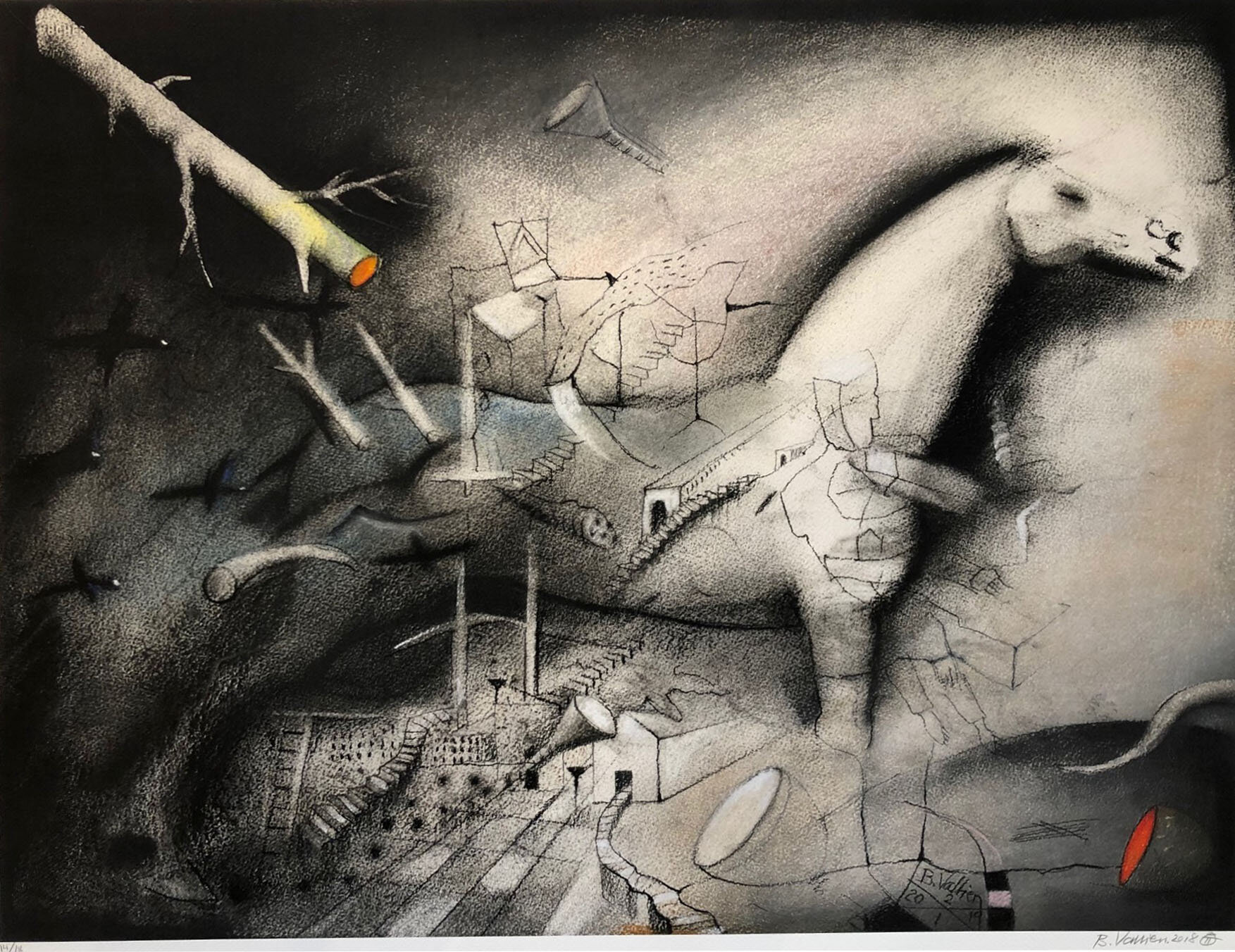Gesture, Movement, and Vitality….
Paley working at the Museum of Glass in Tacoma.
Artist Albert Paley investigates form, explores material characteristics and technical processes, and forges abstract masterpieces—all in service to the notion that art provides access to the intangible facets of the human condition such as emotion, intellect, memory, and aspiration. Paley manipulates material, form, color, and light to create an environment of heightened consciousness where our singular perspective encounters the universality of common experience, and where our imagination is unleashed on the yet-to-be-explored. His abstract assemblages are particularly agile at accessing raw emotion because the narratives are less prescribed; therefore, the discourse between artist and viewer broadens and the layers of meaning deepen.
Paley is most widely known for his forty-year career creating monumental outdoor metal sculptures, each one carefully designed to play off its environment and invite passersby into contemplation. While he is steadfast in his intention for his work—that it be “a sensual and intellectual dialogue”—he also believes that through research and experimentation he can push the limits of his medium, and through aesthetic flexibility he can continue to evolve as a visual artist. As he says: “We don’t have stasis in our minds so why should it exist in our artwork.”
When Paley was invited to do a summer residency collaboration with glass artist Dante Marioni at the Pilchuck Glass School in 1998, he eagerly brought his creative sensibilities and technical expertise in metalwork into an alliance with glass. Though he was aware of the Studio Glass movement and knew Harvey Littleton and Dale Chihuly, he had never engaged with the material. Steel is opaque, hard, and defined by silhouette, while glass is transparent, reflective, and characterized by light. But at Pilchuck, Paley discovered that different glass techniques such as blowing, forming, and casting have commonality with the forging, bending, and punching of iron and steel. More importantly, he recognized a symbiotic relationship between two inorganic materials that through heat and pressure both submit to manipulation and are transformed into expressions of gesture, movement, and vitality. Paley merges the two materials in graceful synergy—the weightiness of metal amplifying the lightness of glass, the fragility of glass highlighting the strength of metal, equivalent forms in different media fluidly intertwining. This complementing of opposites is a visual metaphor for the many dualities of the human condition that exist in dynamic harmony within us.
Crystal Progression, 2019, (detail)
Each sculpture by Albert Paley bears witness to the processes involved in its development; instead of concealing the signatures of the different machines and tools, Paley chases those effects. Like rings on a tree, this surface variation graphically expresses the physical qualities of the material and tells the story of how the piece is made. Paley will deliberately imprint tool lines in the metal and purposely not polish the pour lines off cast glass, going so far as to have special sessions with glass artists like Martin Blank and William Carlson to experiment with creating lines in glass that mimic the interesting marks of a particular metal press. When he was curious how far much metal could twist, he built his own machine for the task. His year-long 2014 residency at the Corning Museum of Glass afforded him the opportunity to work with specialized technicians, scientists, gaffers, and materials such a borosilicate glass that bonds with a metal alloy because they have the same rate of thermal expansion.
Beckoned Gesture, 2019, 33 x 19 x 14”
Paley has said, “there is a vocabulary of form for any given medium. The more technically proficient one becomes, the more they can explore.” He likens that exploration to a dance, in which there is a sense of the choreography but also a sense of letting go and moving unconsciously to the music. Paley uses his immense knowledge, both of the materials he uses and the art historical precedents he admires, as his guide to an open inquiry into the unknown, endeavoring to prevent his established notions and processes from becoming an impediment to seeing and doing new things. His ink on paper monoprints are reductive expressions of this search that allow him to probe formal elements outside his familiar materials. Rather than charting a definitive narrative, each work of art by Albert Paley provides a map to an encounter with our emotional selves. By his deft technical and aesthetic skills, we are quickly freed from our consciousness to wander the intricate twists and turns of each piece, discovering along the way a metaphor for the enigmas, experiences, and ecstasies of the human condition.
A “Walk Through” of the GLASS and STEEL exhibition installed at the Stockbridge Station Gallery, 2020
Albert Paley at work and speaking of his exhibition at the Museum of Glass…
Available Works by Albert Paley
About the Artist….
Albert Paley, photographed in 2013 by Creative Imaging
Albert Paley, an active artist for over 40 years at his studio in Rochester, New York, is the first metal sculptor to receive the coveted Institute Honors awarded by the American Institute of Architects, the AIA’s highest award to a nonarchitect. “The allure of Paley’s art comes through its intrinsic sense of integration of art and architecture,” as one noted architect stated. Paley, Distinguished Professor, holds an Endowed Chair at the College of Imaging Arts and Sciences at Rochester Institute of Technology. Commissioned by both public institutions and private corporations, Paley has completed more than 50 site-specific works. Some notable examples are the Portal Gates for the Renwick Gallery of the Smithsonian Institution in Washington DC, Synergy, a ceremonial archway in Philadelphia, the Portal Gates for the New York State Senate Chambers in Albany, Sentinel, a monumental plaza sculpture for Rochester Institute of Technology, as well as a 65-foot sculpture for the entry court of Bausch and Lomb’s headquarters in Rochester, NY. Recently completed works include three sculptures for the National Harbor development near Washington DC, a 130’ long archway named Animals Always for the St. Louis Zoo, a gate for the Cleveland Botanical Gardens in Cleveland, OH, a sculptural relief for Wellington Place, Toronto, Canada, Threshold, a sculpture for the Corporate Headquarters of Klein Steel, Rochester, NY, and Transformation, a ceremonial entranceway for Iowa State University in Ames, Iowa. Pieces by Albert Paley can be found in the permanent collections of many major museums including: the Metropolitan Museum of Art in New York; the Museum of Fine Arts in Boston; the Museum of Fine Arts in Houston; and the Victoria and Albert Museum in London. Broadly published and an international lecturer, Paley received both his BFA and MFA from the Tyler School of Art in Philadelphia. He received honorary doctorates from: the University of Rochester in 1989; the State University of New York at Brockport in 1996; St. Lawrence University, in Canton, NY in 1997; and the University of Gothenburg, in Sweden in 2012. Paley is also a Distinguished Professor, holding the Charlotte Fredericks Mowris Professorship in Contemporary Crafts, School for American Crafts, College of Imaging Arts and Sciences, Rochester Institute of Technology, Rochester, NY
__________________









